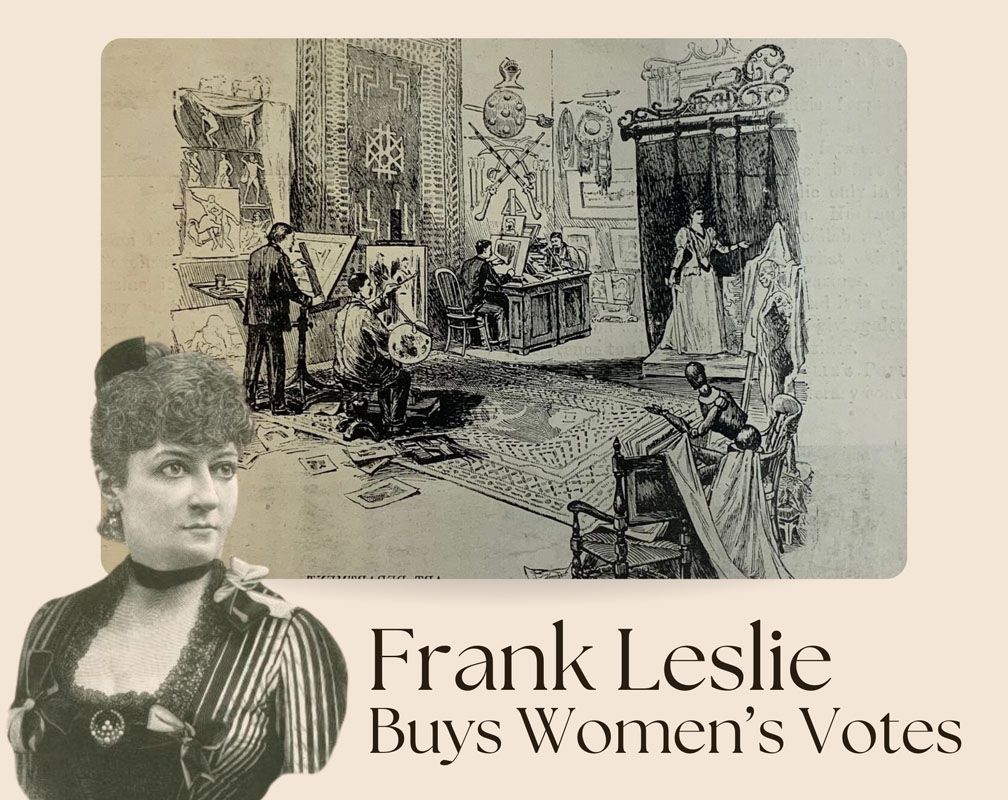
New Museum Exhibit Focuses on Little-Known Saratoga Suffragette and Publisher

ARATOGA SPRINGS — A new exhibit at the Saratoga Springs History Museum shines a spotlight on Miriam Leslie, a little-known suffragette and magazine publisher with an extraordinary life story who spent her summers in Saratoga.
According to the 2022 biography “Diamonds and Deadlines,” Miriam was a prostitute in her youth, spoke at least four languages, may have been the daughter of a slave, and was thrice divorced in an era where divorce was deemed scandalous.
Miriam may have also partook in multiple extramarital affairs, including one, with American poet and frontiersman Joaquin Miller, that occurred during her marriage to Frank Leslie.
All of that, however, is just scratching the surface of Miriam’s almost unbelievable life.
She was born in New Orleans in 1836 to a cotton trader named Charles. The identity of her mother appeared to have been a matter of some dispute. Journalists at the time speculated that she may have been of “Creole” descent. “Diamonds and Deadlines” author Betsy Prioleau suspects she may have been the daughter of an enslaved woman.
Leslie’s bumpy upbringing continued when, as a teen, she moved to New York City and allegedly began working as a prostitute.
She then entered into a series of marriages; first to David Charles Peacock (1854-1856), then to E. G. Squier (1858-1873), then Frank Leslie (1874-1880), and finally to Willie Wilde (brother of the famous Oscar Wilde, 1891-1893).
Squier at one time worked for Frank Leslie, the publisher of Frank Leslie’s Ladies’ Gazette of Fashion and Fancy Needlework, The New York Journal, and Frank Leslie’s Illustrated Newspaper, among other publications. At some point in the 1860s into the 1870s, Miriam became the editor of Frank Leslie’s Lady’s Magazine. Miriam and Frank Leslie apparently began a relationship while both were married, eventually leaving their respective spouses and marrying each other.
Miriam was a talented writer and editor. When Frank Leslie died in debt in 1880, Miriam was credited with turning his media empire around, cutting some publications and increasing the circulation of others. When President James Garfield was shot in 1881, Miriam sent her team to chronicle the events, leading to exclusive stories and illustrations that helped bolster her business.
After her husband’s death, Miriam legally changed her name to Frank Leslie, in part to fight off a lawsuit from Frank’s sons, who had been disinherited by their late father.
When Miriam died in 1914, she donated $2 million to Carrie Chapman Catt, a women’s suffrage leader who campaigned for the 19th Amendment, which secured for women the right to vote in 1920.
This unpredictable and even, at times, shocking life is the subject of “Frank Leslie Buys Women’s Votes,” the Saratoga Springs History Museum’s latest exhibit, which opened on Thursday evening.
Nancy Baird Brown, who serves on the Board of the Women’s Rights Alliance of New York State, helped bring the exhibit to life. She called Miriam “not only one of the most fascinating people, but one of the most important women in women’s suffrage.”
Miriam and Frank Leslie owned a home near Saratoga Lake and, according to Brown, Frank published a successful newspaper that covered Saratoga Springs. The couple became well-known socialites in Saratoga every summer.
The Saratoga Springs History Museum “can be very proud of the fact that they’re bringing [Miriam’s] name up,” Brown said.
“Frank Leslie Buys Women’s Votes” explores Miriam’s personal and social evolution in Saratoga Springs in detail, documents her “pioneering role in journalism,” and shows how her donation to Carrie Chapman Catt helped give American women the right to vote. The exhibit opened with a reception on Sep. 26.